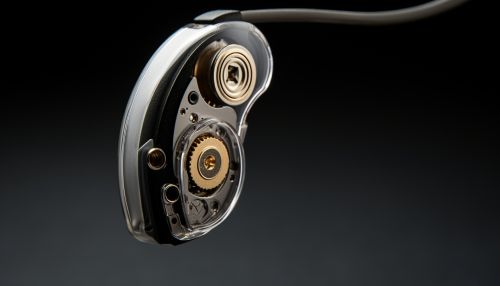Deaf
Understanding Deafness
Deafness, also known as hearing loss, is a partial or total inability to hear. It can occur in one or both ears. In children, hearing problems can affect the ability to learn spoken language, and in adults, it can create difficulties in social interaction and at work. Deafness can be temporary or permanent, and it's a common condition that affects many people to varying degrees.


Causes of Deafness
Deafness can be caused by many different factors, including genetics, aging, exposure to noise, some infections, birth complications, trauma to the ear, and certain medications or toxins. A common condition that results in deafness is otitis media, an infection or inflammation of the middle ear. This condition can lead to long-term hearing loss if not properly treated.
Types of Deafness
There are two main types of deafness, categorized based on which part of the ear is affected. Conductive hearing loss is due to problems with the ear canal, ear drum, or middle ear and its little bones, the malleus, incus and stapes. Sensorineural hearing loss is due to problems of the inner ear, also known as nerve-related hearing loss.
Conductive Hearing Loss
Conductive deafness occurs when the passage of sound is blocked in either the ear canal or in the middle ear. The sound cannot reach the inner ear, which is typically functioning properly. This type of deafness can often be corrected with medical treatment or surgery.
Sensorineural Hearing Loss
Sensorineural deafness occurs when there is damage to the inner ear or the nerve pathways from the inner ear to the brain. Most of the time, this type of deafness is permanent. It can be caused by a variety of conditions, including aging, excessive noise exposure, and genetic disorders.
Diagnosis and Testing
Diagnosis of deafness is conducted through a series of tests including, but not limited to, behavioral tests, otoacoustic emission (OAE) measurements, auditory brainstem response (ABR) test, and pure tone audiometry. These tests can help determine the degree of hearing loss, the type of deafness, and the best treatment options.
Treatment and Management
Treatment for deafness depends on the underlying cause. Some people with conductive hearing loss might benefit from surgical interventions, while others with sensorineural hearing loss might find relief with hearing aids or cochlear implants. In some cases, people with profound deafness choose to use sign language and engage in the Deaf community.
Deaf Culture and Community
The Deaf community is a cultural group which shares a sign language and a common heritage. A person is a member of the Deaf community if he or she self-identifies as a member of the community and if other members accept that person as a part of the community. Deaf culture is a set of social beliefs, behaviors, art, literary traditions, history, values, and shared institutions of communities that are influenced by deafness and which use sign languages as the main means of communication.
